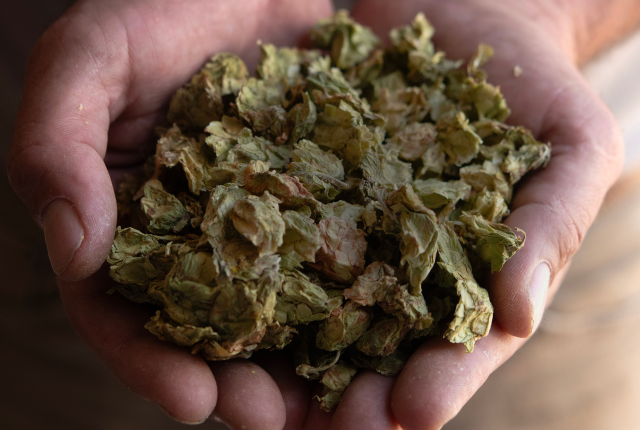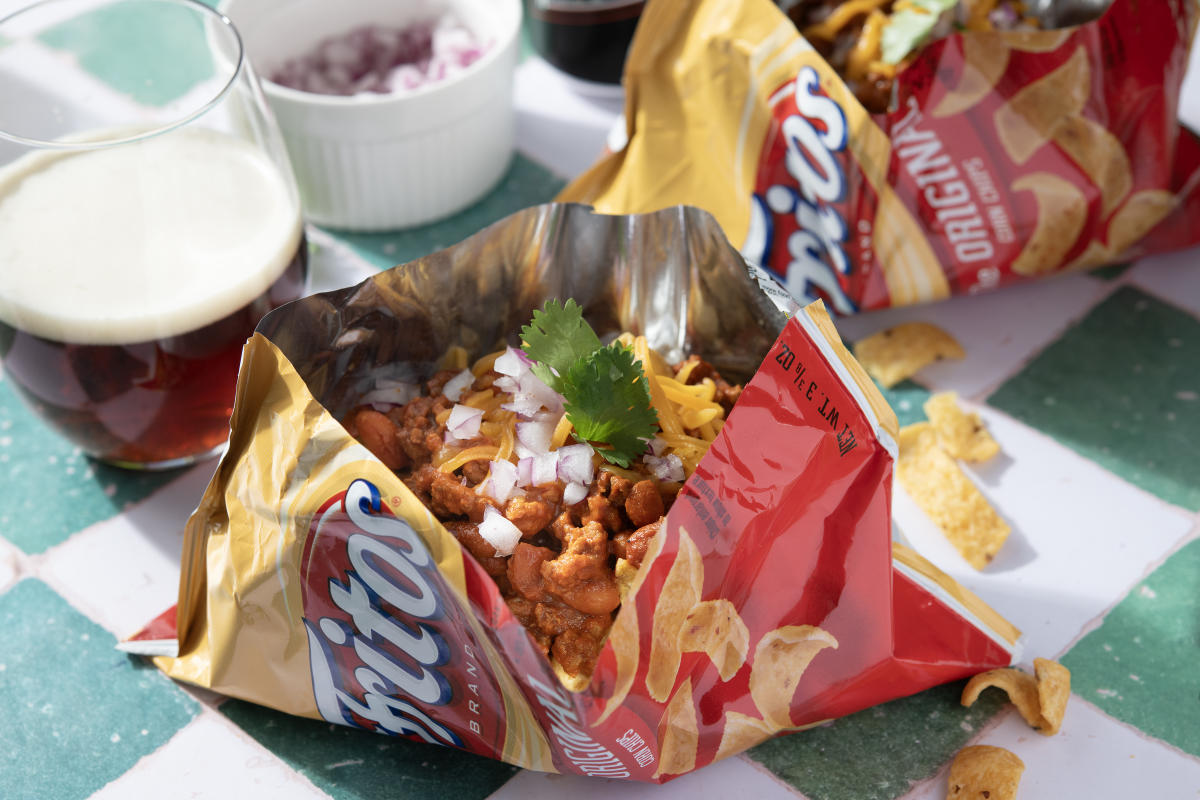ON A BLUSTERY MAY AFTERNOON, Cory Murchy stands amid a maze of trellises at the hop farm at El Rancho de las Golondrinas, a living history museum south of Santa Fe. “By late June, this will be a sea of green 20 feet high,” says Murchy, assistant director of operations. Planted between a centuries-old acequia and La Cienega Creek, the bines can grow a foot a day, curling clockwise up twine strung from tall metal posts. “When it’s flowing, it looks like an ocean of kelp,” Murchy adds, describing how the walls of hops ripple and sway in the summer breeze.
The verdant vision is part of a nascent movement to supply New Mexico’s booming craft beer industry with locally grown hops—one of beer’s four essential ingredients.
New Mexico’s brewing tradition stretches back at least 175 years. In the late 19th century, small breweries sprang up in mining boomtowns and frontier settlements, likely creating a demand for homegrown hops. But Prohibition brought that momentum to a halt, shuttering breweries and cutting off potential markets for local hop farmers.
Nearly a century later, New Mexico ranks 10th in the nation for breweries per capita. Still, until recently, the industry’s hops have come almost exclusively from out of state. And, currently, the state has only six to eight acres in commercial hops production. But Murchy sees a bright future for local hops. “With the number of breweries and different brewhouses opening, I think there is a lot of potential here in New Mexico,” he says.
Beer Creek Brewing Co. co-owner Matthew Oler believes in Murchy’s vision. In 2021, Oler—a former hop grower—teamed with Las Golondrinas to establish the hops farm and honor New Mexico’s brewing history. “One goal was just to give us a local, fresher, closer product,” Oler says, speaking inside the cozy tap room at Beer Creek, located south of Santa Fe off NM 14. “But another was to try to bring back the small mom-and-pop farm in New Mexico.”
Each year, the harvest coincides with the site’s Santa Fe Beer & Food Festival in August, where visitors help sift and sort the fragrant cones. Beer Creek then uses the crop in its Golondrinas Gold—a ruby-hued, German-style beer with chestnut notes that highlights the unique profile of New Mexico–grown hops.
“Like wine, hops pick up flavor profiles that react differently to their terroir,” says Oler, whose company sources hops from five New Mexico farms. “We get a different flavor profile than a traditional hop grown in the Pacific Northwest because of our soils and our climate.” For example, Cascade hops, imported from the northwest, usually have around six percent alpha acids—the bittering agent in hops. The same varietal grown in New Mexico can have double that amount, due to our unique climate, giving it a sharper bite and imparting flavors of grapefruit, pine, and floral notes. “Twelve percent alpha acids is unheard of,” says Oler.
Today, five hop varieties are grown commercially in the state, including Las Golondrinas’s Chinook, Zeus, and Sterling. All are crossed with Neomexicanus, a wild, drought and altitude-tolerant subspecies native to the Southwest, which imparts a lemony, piney flavor and a somewhat sour smell to beer.
At the storage shed near the small Beer Creek brewing operation, Oler grabs a handful of yellow and green hop flowers from a large plastic bag. The yellow pollen inside the flower, he explains, is what gives hops its flavoring and bitterness. “Local hops provide something unique to our beer—freshness,” he says. Oler rubs a cone between his hands to activate the oils inside, which release the pungent aroma of an IPA. Just-picked hops, he says, allows breweries to make “wet-hopped” beers, in which hops go from farm to fermenter within 24 hours, imparting a grassy, earthy, and plantlike character.
Other brewers are following suit. At Kaktus Brewing Company, in Bernalillo, brewmaster Michael Waddy uses Chinook hops from La Capilla Hops Farm in La Cienega to make their Wet Hop Amber. The local plants provide a resinous and earthy flavor with undertones of citrus and grapefruit. “They harvest them in the morning, and I drive up and pick it up and brew that same day,” says Waddy. The result is a “super fresh hop character that you don’t usually get.”
Still, growing hops in New Mexico has its challenges. Most hops are grown in cooler, wetter regions, including the Pacific Northwest, Michigan, and Germany. “The further you get from that, the more you struggle,” says Oler. The state’s heavily alkaline soils can also be an issue, as hops prefer soil on the acidic side.
“To fight that, you need good active soil,” Oler says. “Golondrinas did well because that soil has been farmed and active for over 100 years.” It also helps that the lush 500-acre property is in a wetland, dotted with small ponds, marshes, and an acequia that Murchy diverts into a pressurized drip irrigation system to water the hop farm.
“I’m convinced the hops do well because of the quality of the acequia water,” Murchy says. We drive past an apple orchard in full spring bloom and the Oratorio de San Ysidro chapel, honoring the patron saint of farmers.
The return of New Mexico–grown hops reflects a wider shift toward local sourcing in the state’s beer scene. Beer Creek also uses malted barley from New Mexico’s first-ever malting facility in the Estancia Valley. Owned by third-generation farmer Ryan Schwebach, the facility provides malt for more than 20 breweries in the state, using locally grown grain that would otherwise have been imported from the Pacific Northwest or Europe.
“We have seen the growth of small breweries switching to local malt,” says Chris Jackson, co-founder and editor at Dark Side Brew Crew, a website dedicated to New Mexico’s craft brewing culture. While he notes that only a half dozen or so breweries currently use local hops and its cultivation isn’t yet at the scale needed to sustain the state’s craft brew industry, “interest is still there.”
Oler hopes Beer Creek can inspire other brewers to go local and develop hops into a viable agricultural niche. “We got out there and we pushed the hops industry to start the farms,” he says. “We coined the term farm to tap. And we’ve really run with it.”
Kaktus Brewing Co. serves this melty sauce with their artisan pizzas for crust dipping. Featuring their Helles German-style lager, it pairs great with pretzels, potato chips, and crusty bread.
- ½ cup all-purpose flour
- 1¼ cups whole milk
- ¼ cup Kaktus Helles Lager
- ½ cup butter
- ½ pound cheddar cheese, shredded
- ¼ teaspoon chipotle powder
- ¾ teaspoon Dijon mustard
- 1½ teaspoons garlic powder
Makes 1 quart
Combine all ingredients in slow cooker and set heat to high. Cook for 1 hour, stirring the dip every 10–15 minutes until cheese is melted. (If you don’t have a slow cooker, use a double boiler and simmer low and slow, stirring occasionally until cheese is melted.)
New Mexico’s favorite meal in a bag takes on deeper dimensions by adding Beer Creek’s Rowe Mesa Red, an Irish red ale featuring New Mexico–grown hops. The beer’s hoppy bitterness and malty sweetness complement the spicy red chile, imparting a more complex flavor.
- 1 tablespoon vegetable oil
- 1 medium yellow onion, diced
- 3 cloves garlic, minced
- 1 pound lean ground beef (or venison
- or bison)
- 1 teaspoon salt
- 1 teaspoon pepper
- 1 teaspoon ground cumin
- 1 teaspoon Mexican oregano
- 1 cup Rowe Mesa Red (or your favorite local red ale)
- ¾ cup beef or chicken broth
- 1½ cups New Mexico red chile sauce
- 1 can (15 ounces) pinto beans, rinsed
- 1 large bag Fritos or individual small bags
- 1½ cups shredded cheddar
- ½ cup diced white or red onion
- Optional toppings: shredded lettuce, sour cream, sliced jalapeños, diced tomatoes, salsa, and chopped fresh cilantro
Serves 4–6
1. In a large saucepan or skillet, heat the oil over medium heat and add the yellow onion. Cook until softened, about 5 minutes.
2. Add garlic, ground beef, salt, and pepper; brown while crumbling the beef. Drain any excess fat.
3. Add cumin and oregano, stirring to toast the spices for 30 seconds. Slowly pour in the red ale, scraping the bottom to deglaze the pan. Simmer for 2 minutes.
4. Add the broth and bring to a simmer. Reduce heat and cook for 10 minutes, uncovered, until thickened.
5. Stir in red chile and beans, and simmer on low another 10 minutes until desired consistency. Taste and adjust salt as needed.
6. Assemble in bags or family style, in a bowl or dish, layering a generous handful of Fritos. Spoon the meat sauce over the chips. Top with cheese, white onion, and your chosen garnishes.








